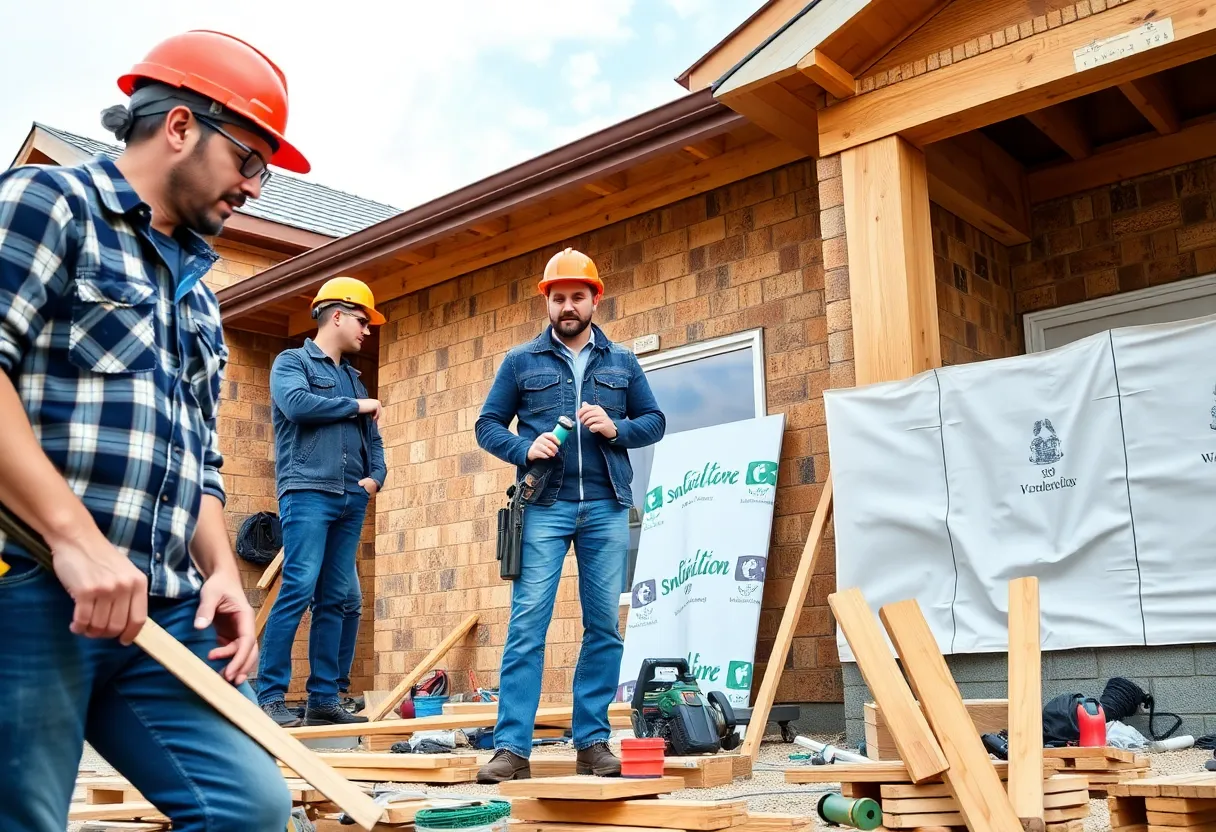United States, August 28, 2025
News Summary
The residential construction sector is seeing a surge in independent contractors, with nearly 80% operating as self-employed entities. Recent data indicates that independent contractors play a vital role in managing and executing construction projects, significantly impacting the workforce and financial landscape of the industry. Despite their prevalence, many face challenges in terms of profitability and revenue generation. Understanding the dynamics of this shift can inform better support strategies for these small businesses in the construction sector.
Independent contractors make up most of the residential construction field, but bring in a small slice of industry revenue
Nearly 80% of companies in home building and specialty trade contracting operate as self-employed independent contractors, and the majority of these firms are small and low‑receipt businesses. This picture comes from a 2022 industry analysis using Economic Census and nonemployer data compiled by an industry association. The findings show a sector driven by many lone operators and very small firms, with most revenue concentrated in the minority of larger companies.
Topline figures
– About 813,000 nonemployer firms operate in residential building construction, making up close to 80% of all establishments in that subsector.
– Over 1.9 million independent contractors work in specialty trades, accounting for 79% of specialty trade contractor establishments.
– In land subdivision, more than 9,000 independent contractors represent about 68% of those firms.
Who earns what
Independent contractors tend to have modest annual revenues. Self-employed firms in residential building construction average under $103,000 in yearly receipts. Specialty trade independent contractors average under $70,000. Land subdivision contractors are an exception, with average annual business receipts around $288,000.
Share of jobs and sales
Nonemployer firms make up nearly half of the full‑time equivalent (FTE) workforce in residential building construction, and account for 26% of FTEs in land subdivision and 28% in specialty trades. Despite their numbers and labor share, nonemployer firms account for only about 12% of combined sales and receipts in residential building construction and land subdivision, and roughly 9% of specialty trade revenue.
Business size and revenue bands
Many residential construction businesses operate at small revenue levels. Overall, 63% of home builders and roughly two out of three specialty trade contractors produce less than $1 million in receipts. Looking only at establishments with paid employees, 75% of remodeling firms, 63% of land developers, and 59% of specialty trade companies report under $1 million in annual receipts.
About 45% of home builders report annual sales above $1 million. Multifamily general contractors tend to be larger: roughly 10% reported sales between $10 million and $25 million, and about 11% reported sales between $25 million and $100 million in 2022.
Small business status under federal rules
Most residential construction firms meet U.S. Small Business Administration size rules and qualify as small businesses. Current SBA size limits relevant to the sector are roughly $45 million for builders, $34 million for land subdivision firms, and $19 million for specialty trade contractors. Under those thresholds, almost all remodelers and single‑family builders qualify as small businesses, along with at least 98% of land developers and 96% of specialty trade contractors.
What the data suggest
The industry structure is dominated by many independent operators who employ few or no paid staff and produce relatively small yearly receipts. Those nonemployer firms supply a large share of on‑site labor but a much smaller share of total industry revenues. Meanwhile, a smaller set of larger firms — especially in multifamily and some homebuilding segments — capture a disproportionate amount of sales and receipts.
This arrangement matters for market competition, workforce planning, access to capital, and policy that targets small business support. High counts of self‑employed contractors can reduce overhead and increase flexibility in the marketplace, but the limited revenue per independent firm highlights potential barriers to scaling operations or investing in larger projects.
Frequently Asked Questions
Q: How many residential construction firms are independent contractors?
A: Nearly 80% of home building and specialty trade contractor firms operate as self‑employed independent contractors. In residential building construction alone, there are about 813,000 nonemployer firms.
Q: Do independent contractors earn as much as firms with employees?
A: No. Average annual receipts for self‑employed firms in residential building construction are under $103,000, and specialty trade contractors average under $70,000. Firms with employees are more likely to report higher sales.
Q: Do nonemployer firms provide many jobs?
A: Nonemployer firms account for nearly half of full‑time equivalent workers in residential building construction, and 26% to 28% in land subdivision and specialty trades, respectively.
Q: How much of total industry revenue is from independent contractors?
A: Nonemployer firms represent about 12% of sales in residential building construction and land subdivision combined, and about 9% of specialty trade contractor revenue.
Q: Are most residential construction firms considered small businesses?
A: Yes. Under current federal size standards, most firms in the sector qualify as small businesses. Nearly all remodelers and single‑family builders, and the vast majority of land developers and specialty trade contractors, meet the small business thresholds.
Key features at a glance
| Feature | Figure | Notes |
|---|---|---|
| Share of independent contractors | ~80% | Home builders and specialty trade contractor firms |
| Nonemployer firms in RBC | ~813,000 | Close to 80% of residential building construction establishments |
| Specialty trade independent contractors | ~1.9 million | About 79% of STC establishments |
| Average receipts – RBC independent firms | Under $103,000 | Average yearly business receipts |
| Average receipts – STC independent firms | Under $70,000 | Average yearly business receipts |
| Average receipts – land subdivision | ~$288,000 | Higher average than other independent contractor groups |
| Nonemployer share of sales | 12% (RBC & land subdiv.), 9% (STC) | Small share of total receipts despite large firm counts |
| SBA size limits | $45M builders; $34M land subdiv.; $19M STC | Most firms qualify as small businesses |
Deeper Dive: News & Info About This Topic
Additional Resources
- LBM Journal: Most Home Builders Are Small Businesses per NAHB
- Christian Science Monitor: Modular Construction and Housing Shortage
- Los Angeles Times: Tech Billionaire’s Affordable Housing Initiative
- AZ Central: Phoenix Construction Company’s Nonprofit Projects
- Encyclopedia Britannica: Construction





